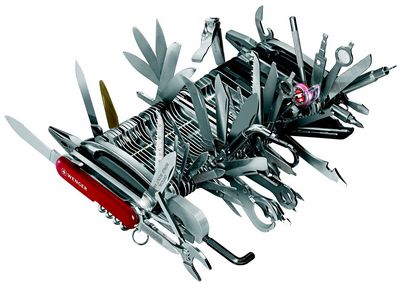This discussion comes at an interesting time. Just a few weeks ago I did a session on geospatial web services in my company. The actual reason that we covered this topic is that there are two interesting (and diverting) trends happening at the same time:
- The current OGC standards are finally taking off. Ever since our governement started serving their large-scale reference maps as publicly available WMS services, I see them being used by many of our customers
- At the same time, I managed finding interesting data sets using CSW services for the first time, and the fact that view and metaservices have to be provided for INSPIRE III themes by the end of the year will probably mean that the shift to using services is finally taking off.
- On the other hand RESTful GIS services have started popping up everywhere. ESRI's proposed Geoservices REST API is one, GeoREST is another one which I've enjoyed using.
12-054r2 GeoServices REST API - Part 1: Core 12-055r2 GeoServices REST API - Part 2: Catalog 12-056r2 GeoServices REST API - Part 3: Map Service 12-057r2 GeoServices REST API - Part 4: Feature Service 12-058r2 GeoServices REST API - Part 5: Geometry Service 12-059r2 GeoServices REST API - Part 6: Image Service 12-060r2 GeoServices REST API - Part 7: Geoprocessing Service 12-061r2 GeoServices REST API - Part 8: Geocoding Service
 |
| One tool for every job? Image source |
So my proposal would be: break up the proposal. Check where new standards may be useful or where RESTFul implementations of existing services (and we already have a long list) are more appropriate. The services provided by ESRI prove that such an implementation really boosts productivity.
And actually while doing this, perhaps we should immediately consider using binary data where appropriate. I started off by saying that web services are finally being used. I did not mention WFS. This is logical. Nobody likes WFS. It is too slow. If WMS would contain an xml record for every pixels with an attribute for every color nobody would use it either. No, WMS sends a binary image. Why isn't WFS doing the same and sending vector data in a binary form?
About WFS and binary output, you can already specify the OUTPUTFORMAT of the GetFeature request to something different from GML. Mapserver or Geoserver can for example output shapefiles.
ReplyDeleteThat's definitely nice and I could find many uses for it, but ... it is not a standard. So most clients don't support it.
DeleteHi there Johan.
ReplyDeleteI really feel the same when using ESRI's rest api. It's so simple comparing to everything else that it's a joy. Other than just plain WMS there really is something to be gained from standardizing this api. I also agree with some of the criticism but overall I feel the community would gain on the long run. Your proposal of breaking the proposal into several could also allow for progressive standardization that would give time to all the players for adoption. I.e. start with Core and MapService. Later go on with Feature and Geometry...
Thanks for your comments. In a way, I think the way that ESRI (and others eg georest) is definitely the way forward, and that it will happen independent of whether this proposal is honoured by the OGC or not. Compare it to Microsoft XMLHTTP. It was never a standard, but it happened to become the start of AJAX which we all use now.
DeleteWhat I dislike about the proposed API is that it leaves no room for improvement. Perhaps with minor changes we can have a standard with a broader support which is also more future proof.
And if we start out, I would not start with mapservice. I don't see a future for mapservices other than basemaps for which we have a good simple standard(TMS, not an OGC standard btw or WMTS), and otherwise we can fall back on WMS which works good enough. What we really need is a good "feature" service. HTML 5 can handle 2 million features (see eg http://www.giscloud.com/blog/gis-cloud-starts-html5-mapping-revolution ). Why should we render images on the server if we can have interactive maps on the users pc?